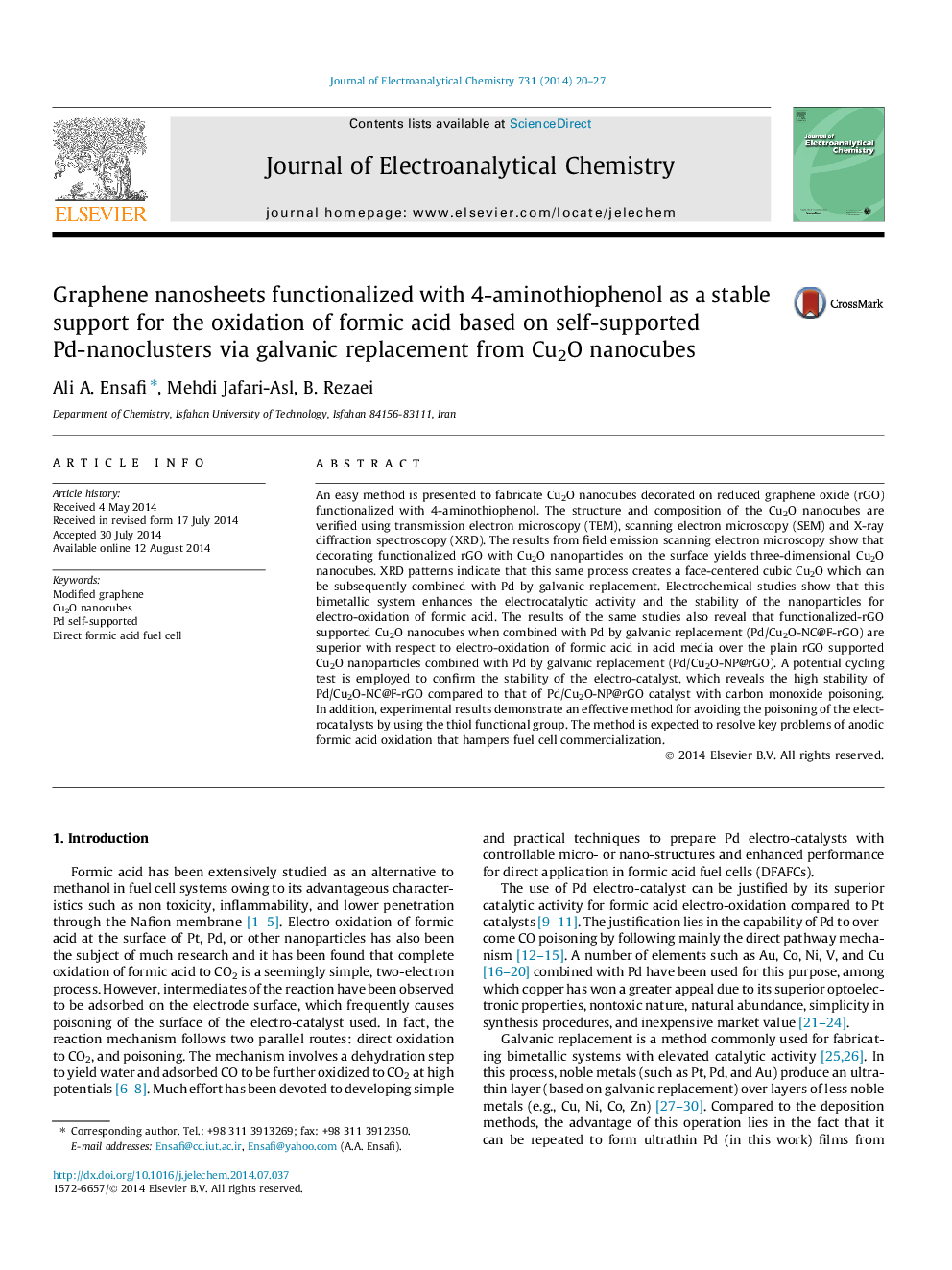| Article ID | Journal | Published Year | Pages | File Type |
|---|---|---|---|---|
| 218668 | Journal of Electroanalytical Chemistry | 2014 | 8 Pages |
•Graphene nanosheets functionalized 4-aminothiophenol was prepared as a stable support.•Three-dimensional Cu2O nanocubes decorated on the functionalized-reduced graphene oxide.•The Cu2O on the functionalized-reduced graphene oxide was combined with Pd by galvanic replacement.•Pd/Cu2O-functionalized-reduced graphene oxide was used as an electrocatalyst for oxidation of formic acid.
An easy method is presented to fabricate Cu2O nanocubes decorated on reduced graphene oxide (rGO) functionalized with 4-aminothiophenol. The structure and composition of the Cu2O nanocubes are verified using transmission electron microscopy (TEM), scanning electron microscopy (SEM) and X-ray diffraction spectroscopy (XRD). The results from field emission scanning electron microscopy show that decorating functionalized rGO with Cu2O nanoparticles on the surface yields three-dimensional Cu2O nanocubes. XRD patterns indicate that this same process creates a face-centered cubic Cu2O which can be subsequently combined with Pd by galvanic replacement. Electrochemical studies show that this bimetallic system enhances the electrocatalytic activity and the stability of the nanoparticles for electro-oxidation of formic acid. The results of the same studies also reveal that functionalized-rGO supported Cu2O nanocubes when combined with Pd by galvanic replacement (Pd/Cu2O-NC@F-rGO) are superior with respect to electro-oxidation of formic acid in acid media over the plain rGO supported Cu2O nanoparticles combined with Pd by galvanic replacement (Pd/Cu2O-NP@rGO). A potential cycling test is employed to confirm the stability of the electro-catalyst, which reveals the high stability of Pd/Cu2O-NC@F-rGO compared to that of Pd/Cu2O-NP@rGO catalyst with carbon monoxide poisoning. In addition, experimental results demonstrate an effective method for avoiding the poisoning of the electrocatalysts by using the thiol functional group. The method is expected to resolve key problems of anodic formic acid oxidation that hampers fuel cell commercialization.
Graphical abstractFigure optionsDownload full-size imageDownload as PowerPoint slide
